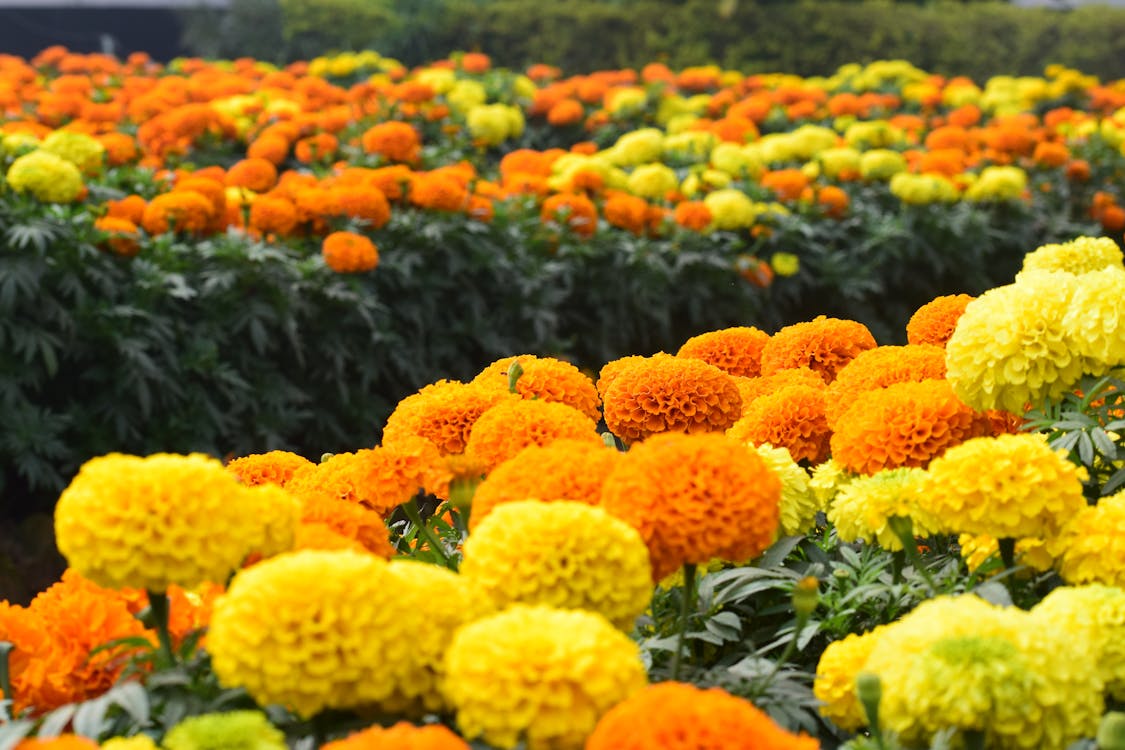How Do You Create And Maintain A Garden?
Creating and maintaining a garden is a gratifying and rewarding endeavour that allows you to connect with nature, cultivate a green oasis, and enjoy the beauty of your outside environment. It takes a combination of planning, planting, nurturing, and continuing maintenance to get a garden off the ground and flourishing, regardless of whether you’re a first-time gardener or a seasoned veteran.

In this detailed manual, we’ll go over everything you need to know to start cultivating a lush garden, from finding the appropriate spot and preparing the soil to picking out the best plants for your region and giving them the attention they deserve all through the year. This article will equip you with the information and advice necessary to bring your garden to life and keep it flourishing year-round, whether you envision a rich flower garden, a profitable vegetable patch, or a low-maintenance succulent refuge.
Embark on a voyage of green-thumb success as we delve into the art and science of gardening. Experience the satisfaction of seeing your plants flourish, gain knowledge for addressing frequent problems, and improve your garden’s long-term viability by learning sustainable gardening techniques. Learn the ins and outs of gardening with us and you’ll soon have a space that is both a reflection of your unique personality and a haven for you and the natural world.
How Do You Create And Maintain A Garden?
Several critical measures must be taken during the creation and upkeep of a garden to ensure its health and vitality. To assist you, by Clicking Here we have compiled the following detailed guide:
Planning
- Choose the Right Location: Ensure your garden gets adequate sunlight and has well-drained soil.
- Select Plants Wisely: Consider the climate, soil type, and sunlight when choosing plants.
Soil Preparation
- Test and Amend Soil: Conduct a soil test to determine its composition and pH. Amend soil as needed with organic matter like compost.
- Create Raised Beds: Raised beds can improve drainage and provide better control over soil quality.
Planting
- Follow Planting Guidelines: Pay attention to the recommended spacing and depth for each plant.
- Consider Companion Planting: Some plants benefit each other when planted together, while others may inhibit growth.
Watering
- Establish a Watering Schedule: Water deeply but less frequently to encourage deeper root growth.
- Use Mulch: Mulching helps retain soil moisture, suppress weeds, and regulate soil temperature.
Weeding
- Regular Weeding: Keep the garden free from weeds, as they compete with your plants for nutrients and water.
- Mulch for Weed Control: A layer of mulch can help prevent weed growth.
Fertilizing
- Understand Plant Nutrient Needs: Different plants have different nutrient requirements. Use fertilizers accordingly.
- Use Organic Fertilizers: Consider organic options for a more sustainable approach.
Pest Control
- Identify Pests: Regularly inspect plants for signs of pests and diseases.
- Natural Pest Control: Introduce beneficial insects, use neem oil, or make homemade remedies to control pests.
Pruning
- Regular Pruning: Prune plants to remove dead or diseased growth and encourage healthy development.
- Shape and Control Growth: Pruning helps control the size and shape of plants.
Harvesting
- Harvest at the Right Time: Pick fruits, vegetables, and herbs when they are ripe for the best flavour and nutritional value.
- Promote Continuous Harvest: Harvest regularly to encourage continuous production.
General Maintenance
- Monitor for Changes: Keep an eye on your plants for any signs of stress, disease, or nutrient deficiencies.
- Adjust as Needed: Make adjustments to your care routine based on the specific needs of your plants.
Seasonal Care
- Prepare for Seasons: Consider seasonal changes and prepare your garden accordingly, such as winterizing or protecting plants from extreme heat.
Learn and Improve
- Garden Journal: Keep a journal to record your observations, successes, and challenges.
- Continuous Learning: Stay informed about best practices and new techniques for gardening.
Keep in mind that your garden is special and that these suggestions can be modified to fit your needs. Don’t be scared to try new things and see what gives the greatest results for your plants and garden; gardening is an ongoing learning experience.
Important Thing In A Garden
There are a few essentials for a flourishing garden. varied gardens have varied needs, however, they are necessary regardless of the type of garden you have:
- Sunlight: Most plants require an adequate amount of sunlight for photosynthesis. Ensure your garden receives the right amount of sunlight based on the needs of your plants.
- Water: Consistent and appropriate watering is essential for plant growth. Be mindful not to overwater or underwater, as both can have negative effects on plants.
- Soil Quality: Healthy soil is the foundation of a productive garden. Test and amend your soil to provide the necessary nutrients and good drainage for plant growth.
- Plant Selection: Choose plants that are well-suited to your climate, soil, and sunlight conditions. Consider factors like hardiness, water requirements, and space needs.
- Spacing and Arrangement: Proper spacing between plants helps prevent competition for nutrients and sunlight. Arrange plants strategically based on their growth habits and needs.
- Mulching: Mulching helps retain soil moisture, suppress weeds, and regulate soil temperature. Use organic mulch to improve overall soil health.
- Weed Control: Regular weeding is crucial to prevent weeds from competing with your plants for resources. Mulching and hand weeding can help keep the garden free of unwanted plants.
- Fertilization: Provide necessary nutrients through organic or synthetic fertilizers. Understand the nutrient needs of your plants and fertilize accordingly.
- Pest Management: Monitor your garden for pests and diseases. Implement integrated pest management strategies, including natural predators, companion planting, and organic pesticides if needed.
- Pruning and Maintenance: Regular pruning helps maintain the health and shape of plants. Remove dead or diseased growth and promote proper air circulation.
- Harvesting: Harvest fruits, vegetables, and herbs at the right time to ensure optimal flavour and nutritional content. Regular harvesting can also encourage continuous production.
- Observation and Learning: Pay attention to changes in your garden and learn from your experiences. Keep a garden journal to track what works well and what needs improvement.
- Seasonal Considerations: Adapt your gardening practices based on the changing seasons. Prepare for winter, protect plants from extreme heat, and adjust care routines accordingly.
Keep in mind that your strategy will vary from garden to garden based on aspects such as climate, plant choices, and local conditions. Regular care, observation, and a willingness to adjust will add to the overall success of your garden.
Conclusion
Plan meticulously, tend to your garden lovingly, and keep your knowledge of gardening skills sharp for the best results. To ensure your garden thrives, you must be familiar with your plants’ requirements, create an ideal environment for them to flourish in, and deal with any problems as they develop. Everything you do in your garden, from preparing the soil to watering, controlling pests, and harvesting, affects the garden’s health and output.
While gardening certainly has its utilitarian uses, it’s also a pleasurable hobby in and of itself. Growing your food is a rewarding way to spend time outdoors, learn about the natural world, and see the results of your efforts (both physically and figuratively). You can ensure the long-term health of your garden by keeping a close eye on it, being flexible when necessary, and adopting sustainable practices.
Whether you are growing flowers, veggies, herbs, or a combination of these, the adventure of gardening provides chances for creativity, exploration, and a deeper understanding of the natural world. Always look at the changing of the seasons and the growth of new plants as an opportunity to expand your gardening knowledge and refine your techniques. So, put on your gardening gloves, dig in the dirt, and revel in the awe and fulfilment of tending your very own patch of nature. Good luck with your garden!

